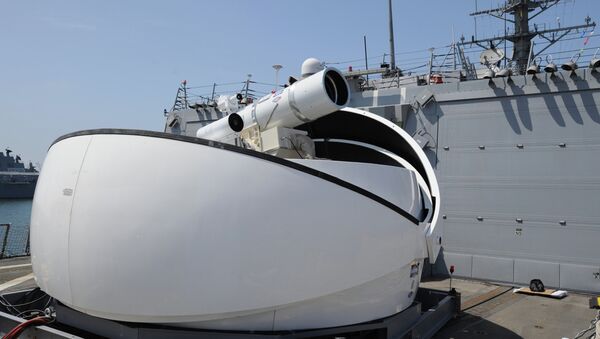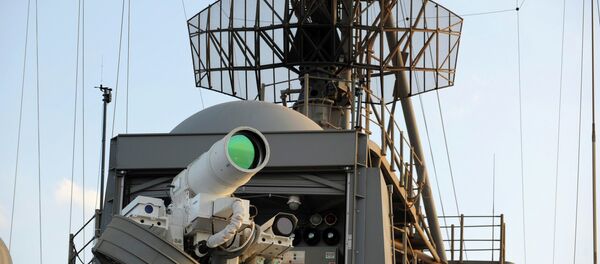Invisible to the naked eye, the beam of a laser weapon is able to lock onto an airborne target such as a drone, missile or mortar round, quickly heating it up and either causing it to explode or destroying the internal guidance system of the incoming ordnance, rendering the device or round useless.
The practical use of lasers would also make the deployment of defensive missile systems, such as the Terminal High Altitude Area Defense (THADD), obsolete, as it will no longer be necessary to fire off an expensive rocket to take down an incoming weapon, according to Phys.org.
So what's the catch? Power. A laser weapon requires, for a brief moment, an enormous amount of power, and that energy must be stored in batteries or generated by onboard equipment which is currently cumbersome and, most important, extremely heavy.
Research is ongoing, as it takes a lot of money to develop entirely new technologies, and the US Congress has been tight with the pocketbook, as previous attempts with lasers have been notable and expensive failures.
In 2012, the government killed a laser program in which a directed-energy device was mounted onto a 747 aircraft. The airborne laser never worked properly and the power-generating equipment was enormously heavy. The Pentagon had flushed some $5 billion down the drain; er, into the project, by the time Congress pulled the plug.
Mark Gunzinger, a senior fellow at the Center for Strategic and Budgetary Assessments, suggested that the implementation of lasers on aircraft is key, as, using as-yet-undeveloped technologies, planes' engines could be used to charge the weapons.
"An aircraft doesn't have to return to base to upload more weapons," he said. "It could refuel and continue to operate with its nearly unlimited magazine."
Gunzinger said that the current 30-kilowatt lasers being tested by the Pentagon will soon become 150-kilowatt, and, within a decade, 300-kilowatt lasers, changing the shape of the battlespace.



